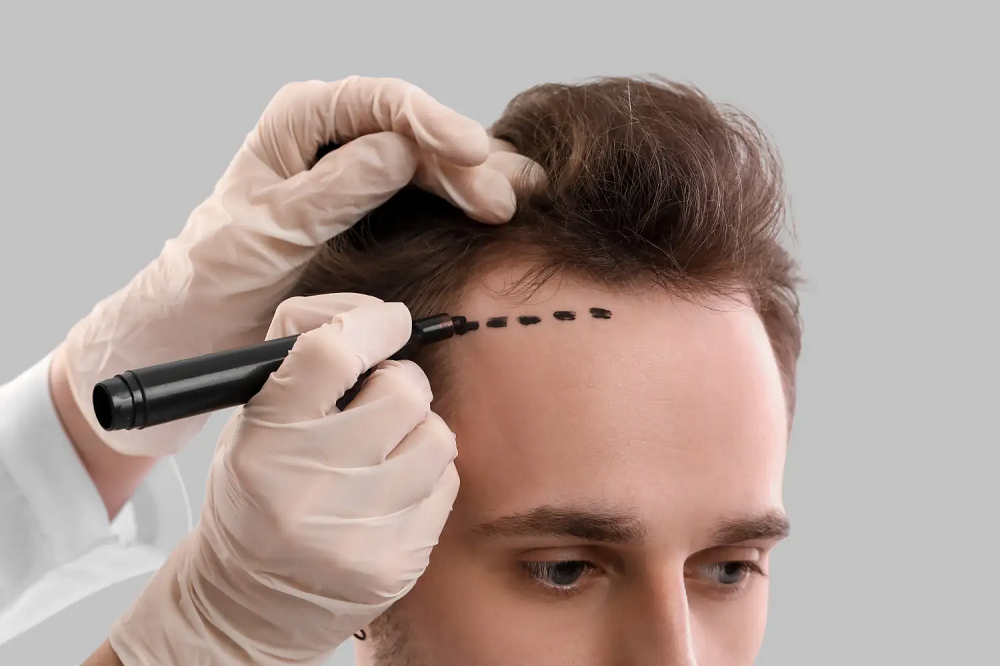
Choosing Between FUE and FUT Hair Transplants in Islamabad
Baldness is a common problem for many people, regardless of age, gender, and ethnicity. The popularity of baldness treatment or hair restoration over the years, since its inception, has come a long way, as many people seek to regain their confidence and previous appearance. Balding or thinning out is in Islamabad, as it is with most of the world, something to which people are more likely to turn their attention to hair transplants. The two most common methods of hair transplantations are Follicular Unit Transplantation (FUT) and Follicular Unit Extraction (FUE). These two are productive techniques but there is a broad range of very dissimilar ways regarding which they are. By understanding more about these differences, patients are in a better position to make an informed decision about whether Hair Transplant in Islamabad will be most useful for them.
1. Learning the Basics: FUE vs. FUT
Both FUE and FUT are surgical methods for transplanting hairs from the donor region (side or back of the head) to the receiver region (balding scalp, temples, or hairline). It strives to grow a natural hairline and a denser hair crop. The variations, however, are in gathering and transplanting the hairs.
FUE (Follicular Unit Extraction) is the process of removing the single hair follicle by utilizing a tiny punch instrument. The instrument is utilized to make small round incisions on the perimeter of each follicle, and therefore it can be taken from the scalp without resulting in heavy scarring. The follicles are removed, and the follicles are transplanted into the balding or thinning patches.
FUT (Follicular Unit Transplantation) or "strip method" is a technique in which a thin strip of scalp is removed from the donor area. The strip is dissected under magnifying glass with the help of a microscope to remove individual follicular units, and the latter are implanted in the recipient area. The technique is more invasive and creates a linear scar in the donor area.
2. Scarring and Recovery:
Scarring in FUE is definitely minimal compared to FUT.
FUE leaves virtually no scarring. Small incisions used in follicle removal close immediately and are barely noticeable even under close observation. Thus, FUE is mostly preferred by people with short hair or who don't desire any scarring.
FUT, however, results in a linear scar on the donor area from which the strip of hair had been excised. Although the scar is easy to conceal under longer hair, it may be seen if the patient does not maintain his or her hair very short. The recovery time of FUT can also be longer because of the more invasive procedure.
3. Hair Density and Graft Numbers:
The second issue that needs to be considered in choosing between FUE and FUT is the number of hair follicles that can be transplanted in a single session.
FUE will normally yield fewer grafts per operation compared to FUT. As each individual hair is being excised one at a time, it will also take longer and in some cases the number of grafts possible in one operation may be constrained. Nevertheless, FUE will remain quite successful in the case of most individuals, particularly with lesser balding areas.
FUT has the benefit of being able to extract more grafts in a session. Since the strip of scalp is removed and dissected into many follicular units, more grafts can be placed within a short time frame. FUT would thus be best for patients who require complete coverage or large balding.
4. Cost Factors:
The price of hair transplantation in Islamabad may differ based on which procedure is selected. FUE is generally more expensive than FUT because it is more of a labor-intensive process. FUE takes longer and requires more precision, and this can equate to more in general. The fact that FUE requires sophisticated machinery and technology as well makes it more expensive.
FUT, being a quicker procedure with higher graft yield, is also usually cheaper compared. FUT can be budget-friendly on the thrifty or individual who has the necessity to transplant more hair follicles.
5. Best Candidates for FUE vs. FUT:
Although both FUE and FUT are suitable for most individuals suffering from baldness, the procedure can be decided based on personal consideration.
FUE will be most suited for those wishing less scarring and rapid recovery. It is an ideal selection for patients with a preference of having short hair and concern with the visibility of scarring. FUE would be most appropriately suited for the patient with thinning donor scalp or for a patient wishing to cover small patchy bald areas.
FUT is typically recommended to patients with severe hair loss or to patients who need transplanting large numbers of follicles in a single session. It is also appropriate for individuals with thicker hair and do not object to more scarring on the head or want to have long hair.
6. Consultation with an Expert:
While planning for hair transplantation, it's important to consult a trained hair restoration expert in Islamabad. The surgeon will examine your hair texture, the extent of baldness, and your preference before suggesting the ideal procedure. It's also important to select a well-known clinic with trained professionals to get the best result.
Conclusion:
Both FUE and FUT hair transplant are good hair restoration procedures, but the better one of them to opt for depends on factors such as scarring, recovery, size of balding area, and individual preferences. FUE is generally opted for less scarring and quicker recovery, but FUT may be more appropriate for those who require greater graft yield at a lesser cost. Both procedures are easily accessible in Islamabad, and with proper guidance of an able specialist, you can achieve natural-looking, permanent results.
